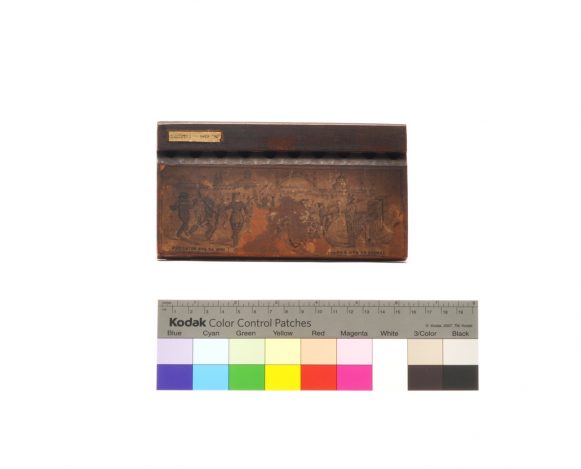



Type of wooden flute of rectangular shape and ten holes. There are ornaments that represent a gathering of people, possibly a representation of a universal exhibition, since the instrument was part of the exhibition in Chicago in 1893. In order to play, the musician takes the instrument to his mouth, like a harmonica.
Previous inventories inform that this museum’s item participated in the Universal Exhibition of Chicago in 1893. Universal exhibitions began to occur at the end of the 19th Century, in a context of advancements in the field of iron and steelworks, progress in the use of electricity and oil, and when companies and governments started to finance scientific research, aiming at getting ahead in the international competition. As part of the main objectives of these exhibitions we may include: the desire of showing the strength of the mechanical force and its inventions, the desire of showing everything regarding human activities – remembering that machines and new inventions were the main attraction. Brazil participated in many universal exhibitions, but the most significant participation took place in the Paris Exhibition in 1889.
BASE MINERVA, 2014.
BETHENCOURT; BORDAS; CANO; CARVAJAL; SOUZA; DIAS; LUENGO; PALACIUS; PIQUER, ROCHA, RODRIGUEZ; RUBIALES; RUIZ, 2012.
BRANDÃO, 2013.
CARVALHO, 1905.
GOMES; PICCOLO; REY, 2011.
ROLLA, 1974.
SOARES, 1990.








